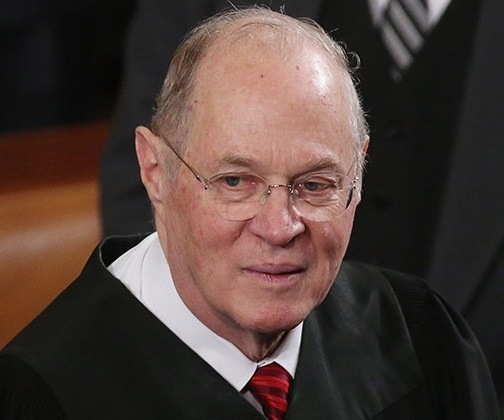
Jerry L. Steering, Esq., is a Police Misconduct Attorney, serving, among other places, Orange County, and the Orange County cities shown below, as well as Los Angeles County, San Diego County, Riverside County and San Bernardino County. Mr. Steering recently successfully prosecuted an excessive force / false arrest case in the Palm Springs area; Edward Moore, Jr. v. City of Desert Hot Springs; Indio – Riverside Superior Court ($825,000.00 settlement a end of plaintiff’s case for excessive force / false arrest.) The Palm Springs area is rife with police brutality, such as beatings, torturings and false arrests and prosecutions.
Orange County, and the Orange County cities shown below, as well as Los Angeles County, San Diego County, Riverside County and San Bernardino County. Mr. Steering recently successfully prosecuted an excessive force / false arrest case in the Palm Springs area; Edward Moore, Jr. v. City of Desert Hot Springs; Indio – Riverside Superior Court ($825,000.00 settlement a end of plaintiff’s case for excessive force / false arrest.) The Palm Springs area is rife with police brutality, such as beatings, torturings and false arrests and prosecutions.
Across the Freeway, in Desert Hot Springs, the stories get worse. The Desert Hot Springs Police Department is probably the worst police department in modern United States history. In the mid-2000′s, “the inmates were running the asylum”. The Desert Hot Springs Police Department was divided into two factions; the “lettuce eaters” and the “meat eaters”. The meat eaters were those police officers who wouldn use any excuse to beat people up, and did so; even if just for fun. The lettuce eaters were those police officers who would only use force when reasonably necessary. See, FBI 302 Reports of interviews of DHSPD Sgt. Ron Hull and Sgt. Eddie Cole.
EXCESSIVE FORCE, FALSE ARREST AND MALICIOUS PROSECUTION CASES
Mr. Steering has been suing police officers, and defending bogus criminal cases of crimes against police officers, for over 28 years. The majority of our firms law practice, is suing police officers and other government officials, for claims such as false arrest, police brutality / excessive force, malicious prosecution, and other Constitutional Torts, and defending bogus criminal cases against the victims of such abuse by the police.
WHAT IS POLICE BRUTALITY / EXCESSIVE FORCE?

The United States Supreme Court has defined Excessive Force as follows:
Where, as here, the excessive force claim arises in the context of an arrest or investigatory stop of a free citizen, it is most properly characterized as one invoking the protections of the Fourth Amendment, which guarantees citizens the right to be secure in their persons . . . against unreasonable . . . seizures of the person . . . . . . . Determining whether the force used to effect a particular seizure is reasonable under the Fourth Amendment requires a careful balancing of the nature and quality of the intrusion on the individuals Fourth Amendment interests against the countervailing governmental interests at stake. Id., at 8, 105 S.Ct., at 1699, quoting United States v. Place, 462 U.S. 696, 703, 103 S.Ct. 2637, 2642, 77 L.Ed.2d 110 (1983). Our Fourth Amendment jurisprudence has long recognized that the right to make an arrest or investigatory stop necessarily carries with it the right to use some degree of physical coercion or threat thereof to effect it. See Terry v. Ohio, 392 U.S., at 22-27, 88 S.Ct., at 1880-1883. Because the test of reasonableness under the Fourth Amendment is not capable of precise definition or mecha ical application, Bell v. Wolfish, 441 U.S. 520, 559, 99 S.Ct. 1861, 1884, 60 L.Ed.2d 447 (1979), however, its proper application requires careful attention to the facts and circumstances of each particular case, including the severity of the crime at issue, whether the suspect poses an immediate threat to the safety of the officers or others, and whether he is actively resisting arrest or attempting to evade arrest by flight. See Tennessee v. Garner, 471 U.S., at 8-9, 105 S.Ct., at 1699-1700 (the question is whether the totality of the circumstances justifies a particular sort of . . . seizure). (See, Graham v. Connor, 490 U.S. 386 (1989.)
The reasonableness of a particular use of force must be judged from the perspective of a reasonable officer on the scene, rather than with the 20/20 vision of hindsight. See Terry v. Ohio, supra, 392 U.S., at 20-22, 88 S.Ct., at 1879-1881. The Fourth Amendment is not violated by an arrest based on probable cause, even though the wrong person is arrested, Hill v. California, 401 U.S. 797, 91 S.Ct. 1106, 28 L.Ed.2d 484 (1971), nor by the mistaken execution of a valid search warrant on the wrong premises, Maryland v. Garrison, 480 U.S. 79, 107 S.Ct. 1013, 94 L.Ed.2d 72 (1987). With respect to a claim of excessive force, the same standard of reasonableness at the moment applies: Not every push or shove, even if it may later seem unnecessary in the peace of a judges chambers, Johnson v. Glick, 481 F.2d, at 1033, violates the Fourth Amendment. The calculus of reasonableness must embody allowance for the fact that police officers are often forced to make split-second judgmentsin circumstances that are tense, uncertain, and rapidly evolvingabout the amount of force that is necessary in a particular situation.
As in other Fourth Amendment contexts, however, the reasonableness inquiry in an excessive force case is an objective one: the question is whether the officers actions are objectively reasonable in light of the facts and circumstances confronting them, without regard to their underlying intent or motivation. See Scott v. United States, 436 U.S. 128, 137-139, 98 S.Ct. 1717, 1723-1724, 56 L.Ed.2d 168 (1978); see also Terry v. Ohio, supra, 392 U.S., at 21, 88 S.Ct., at 1879 (in analyzing the reasonableness of a particular search or seizure, it is imperative that the facts be judged against an objective standard). An officers evil intentions will not make a Fourth Amendment violation out of an objectively reasonable use of force; nor will an officers good intentions make an objectively unreasonable use of force constitutional. See, Scott v. United States, supra, 436 U.S., at 138, 98 S.Ct., at 1723, citing United States v. Robinson, 414 U.S. 218, 94 S.Ct. 467, 38 L.Ed.2d 427 (1973).
In Graham, we held that claims of excessive force in the context of arrests or investigatory stops should be analyzed under the Fourth Amendments objective reasonableness standard, not under substantive due process principles. 490 U.S., at 388, 394. Because police officers are often forced to make split-second judgmentsin circumstances that are tense, uncertain, and rapidly evolvingabout the amount of force that is necessary in a particular situation, id., at 397, the reasonableness of the officers belief as to the appropriate level of force should be judged from that on-scene perspective. Id., at 396. We set out a test that cautioned against the 20/20 vision of hindsight in favor of deference to the judgment of reasonable officers on the scene. Id., at 393, 396. Graham sets forth a list of factors relevant to the merits of the constitutional excessive force claim, requir[ing] careful attention to the facts and circumstances of each particular case, including the severity of the crime at issue, whether the suspect poses an immediate threat to the safety of the officers or others, and whether he is actively resisting arrest or attempting to evade arrest by flight. Id., at 396. If an officer reasonably, but mistakenly, believed that a suspect was likely to fight back, for instance, the officer would be justified in using more force than in fact was needed. (See, Saucie v. Katz, 533 U.S. 194 (2001).)
THE PROBLEM WITH GRAHAMS REASONABLE OFFICER STANDARD IN THE REAL WORLD – THE WATCHMAN GETS TO MAKE HIS OWN RULES THAT REGULATE HIS OWN CONDUCT
The problem with the description of how “excessive force” is defined, is not the Supreme Courts strong emphasis on the officers conduct being based on an objective standard; the hypothetical reasonable officer in the abstract. The problem is, that the standards in the police profession for what is reasonable or otherwise proper police conduct in a given situation, are generally neither the creature of legislation (i.e. state law requiring the audio recording of custodial police interrogations) nor the product of any judicially created mandate, duty, or prohibition (i.e. Constitutional limits on police conduct, such as the juidicially created exclusionary rule.) The conduct of the objectively reasonable officer; that standard that the Supreme Court attempted to describe in Graham v. OConnor and Saucier v. Katz, is created by the very persons whose conduct the Fourth Amendment is supposed to impose limits on. Thus, in a very real sense, the Supreme Court has set the standard (objectively reasonable officer) that the Fourth Amendment requires, but has delegated the details of whats reasonable or not, to the police.
Its letting the regulated enact their own regulations. If they want to all use tasers on civilians for not immediately complying with their orders (lawful or not), then thats reasonable, if they do so. If they all want to pepper-spray persons because their hands are in their pockets (and, therefore, they might possibly pose a threat), then thats reasonable. If they want to prone-out everyone at gun point that they detain, then thats reasonable. At the end of the day, in the real world police world, if the technique, method, procedure, policy or practice, reduces the danger level to the officer, you can bet that, eventually, they will find a way to justify such a technique, method, procedure, policy or practice, and make such otherwise unreasonable behavior, reasonable, for no othe reason than the police would prefer to act that way; Consitutional or not. You see the problem. The police have an old slogan: Its better to be judged by 12, then carried by 6. Its another way of saying, Ill act in a way that is in my self interest; not yours, and if I happen to trampel your Constitutional rights, so be it.
This is quite problematic, as the Bill of Rights was created for the Courts to protect us from the police / government, so when the police define “what’s reasonable force”, in a very real way, the Fourth Amendment to the United States Constitution, one of those rights in the Bill of Rights, is defined by the police, rather than the Courts. There are cases where the Courts will step-in and ban a particular police practice, but those cases are far and few between.
THE PROBLEM OF QUALIFIED IMMUNITY, COMPOUNDS THE PROBLEM CREATED BY GRAHAM
In a nutshell, the Qualified Immunity is an immunity from a lawsuit for violation of a civilians Constitutional rights, when those rights were actually violated, but a reasonably well trained police officer could have believed that his conduct did not constitute such Constitutional violation. So, even if the police officer actually violated your Constitutional Rights, he may be immune from suit, because the law was not clearly established enough at the time of the violation, to hold a police officer liable for his conduct. This is a doctrine contrived by the conservative members of the Supreme Court (since 1982 in Harlow v. Fitzgerald, 457 U.S. 800 (1982)), to ensure that you cant do anything about (or at least do a whole lot less about) your Constitutional Rights being trampled by the government.
So, for example, if the police come-up with a whole new technique to restrain people, such as a with a taser, or pepper-spray, or pepper-balls, or water-balls, or hobbling (police hog tying), or a shock-belting, or stun-gunning, the officer may very well be entitled to qualified immunity from being sued for the misuse of any of the above-mentioned devices; not because its reasonable, but because the police just use those devices in such manners; thereby giving the Courts an excuse to relieve the police officer from liability for the damage caused by his violation of the Constitutional Rights of civilians:
However, a trial court should not grant summary judgment when there is a genuine dispute as to the facts and circumstances within an officers knowledge or what the officer and claimant did or failed to do. Id. (Saucier v. Katz, supra.)
WHY THE POLICE CRIMINALLY PROSECUTE THEIR VICTIMS.
Unfortunately, because of institutional pressures (i.e. ratting out fellow officer not a good career move), and the obvious political and practical consequences of not backing-up the their fellow officers, the norm in todays police profession, is for peace officers to falsely arrest their victims, and to author false police reports to procure the bogus criminal prosecutions (i.e. to literally frame others) of those civilians whose Constitutional rights and basic human dignity have been violated; to justify what they did, and to act in conformity with that justification. The excessive force victims get criminally prosecuted, for crimes that they didnt commit; usually for crimes such as Resisting / obstructing / delaying a peace officer in the lawful performance of their duties (Cal. Penal Code 148(a)(1)), assault on a peace officer (Cal. Penal Code 240 / 241), battery on a peace officer (Cal. Penal Code 242 / 243(b) (which is almost always, in reality, battery by a peace officer; otherwise known as Excessive Force or Unreasonable Force), and resisting officer with actual or threat of violence (Cal. Penal Code 69.) Section 69 is a wobbler under California law; a crime that the government can charge as either a misdemeanor or a felony. This charge is usually reserved for cases in which the police use substantial force on the innocent arrestee (the real victim), and need to falsely claim more violent / serious conduct by the victim to justify their outrages.
So, for example, the crime of battery on a peace officer (Cal. Penal Code 242 / 243(b)), is almost always, in reality, battery by a peace officer; otherwise known as Excessive Force; an unreasonable seizure of a person under the Fourth Amendment to the United States Constitution (See, Graham v. Connor, 490 U.S. 386 (1989).)
FRAME-UPS AND THE DOCTRINE OF COLLATERAL ESTOPPEL
If the falsely arrested victim, now a criminal defendant being framed, gets convicted of any crime, he/she can no longer sue for a false arrest, even though the police may not have had either a warrant or probable cause to have arrested the victim. See, Heck v. Humphrey, 512 U.S. 477 (1994.) Moreover, if the criminal defendant gets convicted of a crime that requires the victim officer to be engaged in the lawful performance of his/her duties, most of the time, the excessive force victim is legally precluded (via the doctrine of colleteral estoppel) from suing the police for excessive force. See, Susag v. City of Lake Forest, 94 Cal.App.4th 1401 (2002.)
If you have been the victim of Excessive Force by a police officer, please check our Section, above, entitled: What To Do If You Have Been Beaten-Up Or False Arrested By The Police. Also, please click on Home, above, or the other pages shown, for the information or assistance that we can provide for you. If you need to speak with a lawyer about your particular legal situation, please call the Law Offices of Jerry L. Steering for a free telephone consultation.
Thank you, and best of luck, whatever your needs.
Law Offices of Jerry L. Steering
Jerry L. Steering, Esq.

Steering Law is a California-based civil rights and criminal defense firm led by Jerry L. Steering, Esq. The firm focuses on police misconduct cases, including excessive force, false arrest, malicious prosecution, contempt of cop incidents, and 42 U.S.C. §1983 civil rights actions, while also handling serious criminal defense matters. Steering Law is dedicated to protecting clients’ constitutional rights and delivering justice for individuals who have been wronged by law enforcement.